Want to know a little more about lighting and types of lights?
Lighting these days is a huge deal. From LEDs to smart lights to fluorescents to colour-changing bulbs, there seems to be a light to do almost anything that you need, for almost every room in your house.
Due to the huge array of options available, and all the surrounding information, you can easily get lost in pages and pages of jargon. That's why we have put the basics together about the types of lights, their properties and their capabilities, to try and make it a little easier to wrap your head around. If you have any questions regarding lighting or types of lights, give 1st Call Electrical a call at 1300 016 671 and we can discuss the topic further with you.
Types of Lights
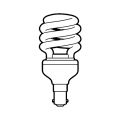
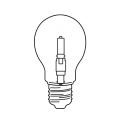


There are four main types of lights - light-emitting diodes (LED), compact fluorescent lamps (CFL), halogen lamps and incandescent bulbs.
Light Emitting Diodes (LED)
LEDs are the most energy-efficient and cost-effective lighting options available. They are usually more expensive than a majority of other choices, however last for a long time, activate instantly and do not contain mercury (which is a big plus).
Compact Fluorescent Lamps (CFL)
Although CFLs are usually on the cheaper side, last a few years and provide decent light, they tend to fade over time and burn out even quicker if turned on/off a lot or are exposed to extreme temperatures. They tend to take a couple of moments to light up properly and, due to the fact that they contain mercury, you have to be careful as to how you dispose of them. Although a lot of CFLs have been replaced by LEDs, there are still some CFLs around and you can still purchase them from anywhere that sells light bulbs.
Halogen Lamps
Halogen lamps generally run around 30% more efficiently than incandescent bulbs, last longer, and are primarily used as low-voltage downlights or for special uses. They are also a great option for fittings that remain hot for long periods, as both CFLs and LEDs can be super sensitive to high levels of heat. Remember though, the low voltage doesn't necessarily mean low energy consumption.
Incandescent Bulbs
The incandescent light bulb has been the most commonly used light bulb over the last 100 years or so and is manufactured both cheaply and easily. They are not the most energy-efficient, however, which is why they have been gradually phased out since 2009. You may find them for speciality purposes, however, such as for oven lights or other appliances.
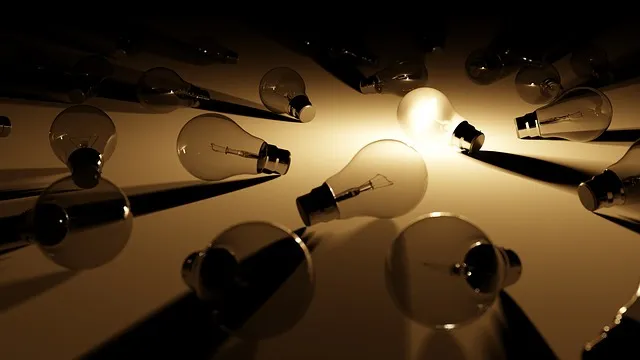
A few things to consider about lighting
Now that we have covered the types of lights, now it's time to take a look at other considerations when choosing lighting.
Colours
There are two aspects to consider when looking at the colour of light bulbs.
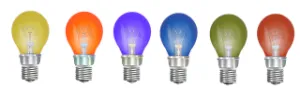
Colour Temperature
You have likely seen the term kelvins (K), which is what colour temperature is measured by, listed on both a lamp and its packaging.
- Warm White: 3000K. Yellowish light is similar to an incandescent bulb, offering a comfortable and cosy appeal. Ideal for living areas and bedrooms.
- Cool White: 4000K. White light is similar to fluorescent light. Suitable for offices, bathrooms and kitchens.
- Daylight: 5000K or more. Blue-white light is the equivalent of outdoor light.
Colour Rending Index
After considering colour temperature, there is the colour rendering index (CRI). The CRI is a score out of 100 that measures a light bulb's ability to accurately show the colours of objects around it, using bright natural light as a reference point. A score of 100 indicates a perfect colour appearance, while a score of 0 (or even less!) indicates a very poor colour rendering.
Most CFL and LED lights sit around 80-90, which is more than sufficient for all rooms in your home. Note however that CRI is not considered a perfect measurement for both CFL and LED lights.
Bulb Price vs. Lifespan
Although you may look at the price tag of CFLs or LED lights and think how expensive they are, when you look at it in the long term, you are usually actually saving money. CHOICE set out the following comparisons when it comes to lifespans and cost:
- Bulb Type + Price - 10W LED $12
- Yearly Energy Use - 18.25kWh
- Yearly Running Cost - $5.48
- Bulb Type + Price - 12W CFL $6.50
- Yearly Energy Use - 21.9kWh
- Yearly Running Cost - $6.57
- Bulb Type + Price - 46W Halogen $2.90
- Yearly Energy Use - 83.95kWh
- Yearly Running Cost - $25.19
- Bulb Type + Price - 60W Incandescent $1.00
- Yearly Energy Use - 109.5kWh
- Yearly Running Cost - $32.85
As you can see, LEDs and CFLs are a lot more energy-efficient and cost-effective than halogen and incandescent lights.
When it comes to the lifespan of the different types of lights, LEDs come out on top again. The supposed life expectancy for halogens and incandescents is a year or two. CFLs typically range from 6,000-15,000 hours (about 3-8 years, assuming 5 hours of use per day), while LED lamps claim 15,000 to 35,000+ hours (about 8 to 19 years). Remember though that both types do fade over time, CFLs much more so than LEDs.
Watts and Lumens
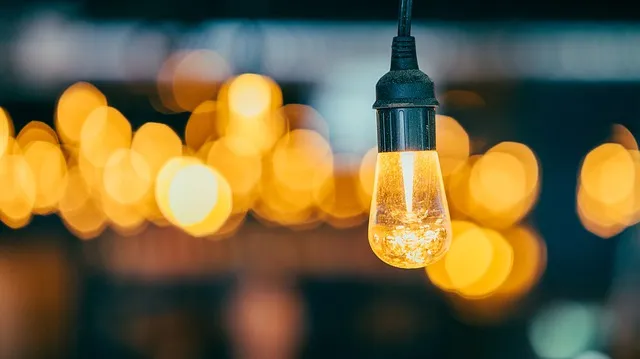
Generally, if you are looking at two light bulbs of the same type, the one that uses more watts will be brighter. For reference, LED light bulbs use less power compared to CFLs, halogens and incandescent lights.
We aren't going to into a huge amount of depth about watts and lumens (lm) here, as that could go on for days, however here is a rough guide as to how lumens, incandescent wattages and LED/CFL wattages all relate to each other:
- 420lm = 40W incandescent = 6W LED / 7W CFL (e.g. for a table lamp)
- 800lm = 60W incandescent = 8W-10W LED / 12W CFL (e.g. for lighting a small room)
- 930lm = 75W incandescent = 10.5W LED / 15W CFL (e.g. for lighting a medium-sized room)
- 1300lm = 100W incandescent = 13W LED / 20W CFL (e.g. for a large room or area that needs bright light
- 2000lm lights can be found, which are around 18-20W LEDs.
Shape
Shape may seem like a bit of an odd topic, but the shape does affect lighting. Although it doesn't have a bearing on the brightness, it does determine the direction in which the most light is sent.
- LED lights are generally bulb-shaped, and as they only emit light from the top half and end of the bulb, are more suited for downward or directional lights.
- CFLs are bulbs, tubes or spirals, which means they can be suited for a range of circumstances. A folded tube sends a majority of its light from the sides, meaning it should be installed lengthways so the side faces out or down. Spirals on the other hand emit light from the end and sides, so are suitable for most scenarios (but may be too bulky for some light fittings).
Light Capabilities
When looking at light capabilities, we are really looking at whether the light can be dimmed and whether it offers instant light.
Dimming Lights
When it comes to dimming, a lot of CFLs and LEDs offer compatibility with dimming switches, but always check the packaging to be sure.
Instant Light
If you are after a light that comes on instantly, CFLs and LEDs are your best options. They generally activate instantly, meaning you can have a decent amount of light as soon as you flick the switch.
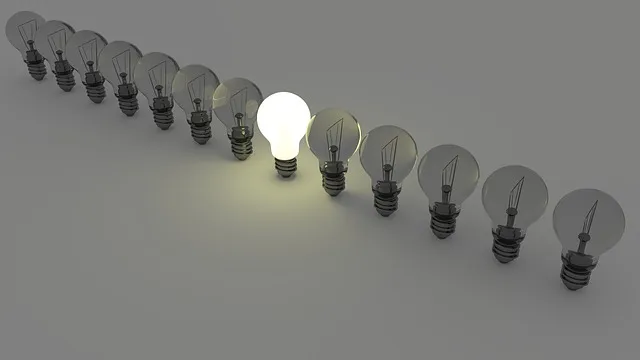
Light Fittings
The type of mount light has - either an Edison screw (ES) or a Bayonet Cap (BC) - doesn't affect how a light bulb performs, however the size of the light fitting, whether its reflector dish is effective and how translucent the glass is can, among other things, have an overall impact. For example, small enclosed light fittings can trap heat from almost all light types and reduce their lifespan, so a halogen lamp, which is less susceptible to heat, maybe the answer in these circumstances (or get a new light fitting!).

Your lighting experts across Melbourne
If you have any questions regarding lighting for your home or office, or would love to arrange for one of our qualified lighting technicians to attend to a lighting job for you, give 1st Call Electrical a call at 1300 016 671 now.
Resources:
Choice (Choosing the right lights): https://www.choice.com.au/home-improvement/energy-saving/light-bulbs/buying-guides/light-bulbs
Energy Rating (Lighting): http://www.energyrating.gov.au/products/lighting
This page should be used as a guide only, and you should always complete your own research and speak to a professional before making a decision regarding any lighting products.
Black and white images courtesy of Energy Rating
